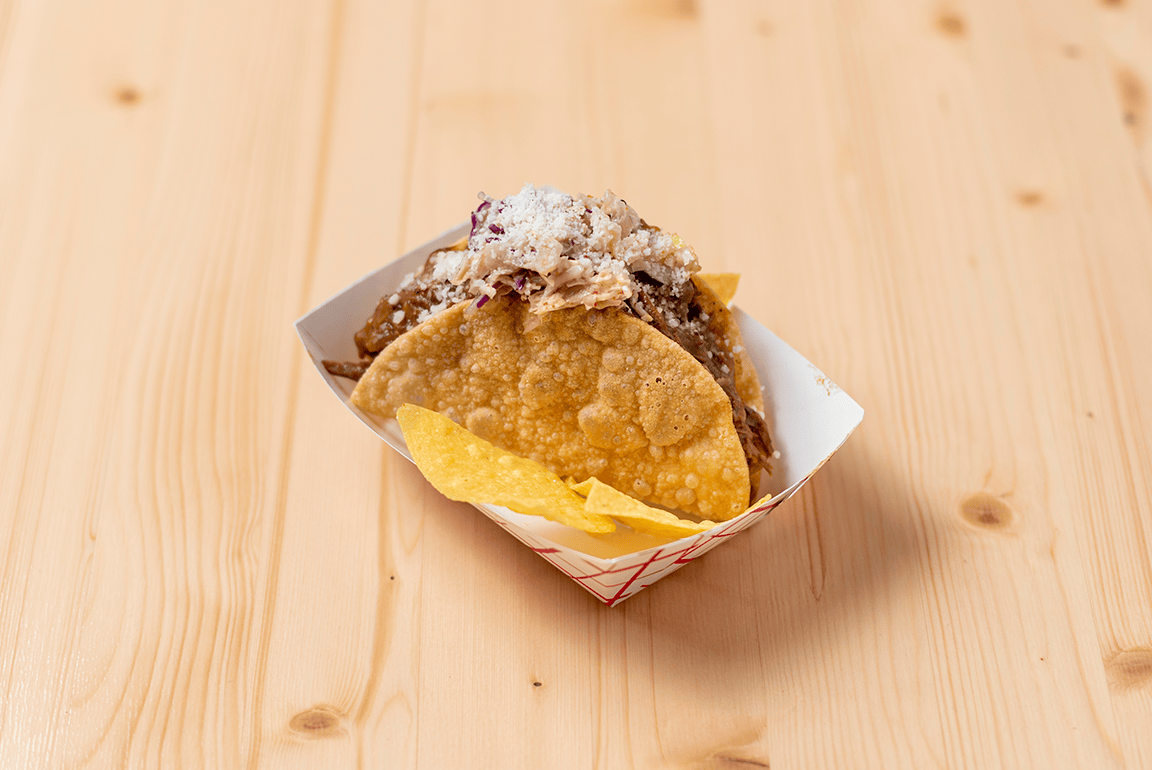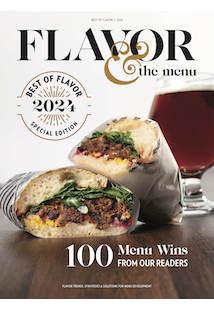
The Other, Other Curry
Lesser known than its India and Thai counterparts, Japanese curry is winning fans for its comfort food vibes and rich flavor.
The Other, Other Curry
Lesser known than its India and Thai counterparts, Japanese curry is winning fans for its comfort food vibes and rich flavor.
By Mike Kostyo
December 20, 2023
By Mike Kostyo
December 20, 2023
When you see curry on a menu, Indian curries, with their vivid array of green, yellow, orange and red hues, likely come first to mind, perhaps swiftly followed by Thai curries, creamy and flavorful with their smooth base of coconut milk and use of bright, aromatic herbs. But there’s another global curry that’s poised for center stage: Japanese curry.
Like most global curries, there is no single Japanese curry recipe, although curry and rice tends to be the defining dish that is a go-to staple found at home and in restaurants across the country. It typically incorporates whatever meats (often beef, pork or chicken) and vegetables (potatoes, carrots or onions) are on hand, combining them with a mild, slightly sweet sauce made from a curry mix that features flavors like turmeric, cumin, coriander, cinnamon, ginger, pepper and fennel. Most curry dishes in Japan are made with packaged curry bases or sauces, and variations on the rice dish might be served over noodles or with fried katsu cutlets.
The popularity of curry in Japan can’t be overstated, making it almost inevitable that Japanese curry will begin to make its way to the U.S., where younger diners are growing up on staples like sushi and ramen. Already, Datassential has reported that menu mentions of “Japanese curry” have already grown 80 percent in the past four years.
Japanese curry may be a lesser-known global curry option in the U.S., but with its mild, sweet flavor profile and approachable ingredients (it’s not far removed from an American beef stew), it may offer the best opportunities for consumer adoption.
How can you start currying favor with your customers by leveraging Japanese curry? It’s certainly a natural, warm, comforting entrée option on Japanese or other Asian-inspired menus in the fall or winter, where a Japanese curry bowl can do double duty at both lunch and dinner, as well as for dining in or delivery. Or follow the lead of New York’s Takumi Taco, which serves up Japanese Curry Beef Tacos with Cotija cheese and napa cabbage slaw inside a crispy gyoza shell.
Better Know a Curry
With another curry rising to fame, here’s a cheat sheet for differentiating among the three major curries, which share many of the same spices but are distinct in their own right.
Japanese Curry
- Key ingredients: A dark roux of turmeric, cumin, coriander, cinnamon, ginger, pepper and fennel
- Texture: Similar to a thick stew
- Popular renditions: Japanese curries feature a mix of hearty ingredients, like beef, chicken, potatoes, carrots and onions
Indian Curry
- Key ingredients: Spices including turmeric, coriander, cumin, ginger, cardamom, cloves, garlic and more
- Texture: Similar to soup
- Popular dishes: Vindaloo, murgh makhani, chana masala, korma, saag
Thai Curry
- Key ingredients: Pastes made of chile pepper, garlic, lemongrass, shallot, kaffir lime peel and spices like coriander and ginger
- Texture: Creamy and milk-like
- Popular dishes: Red curry, green curry, panang curry, massaman curry—each featuring a base of rice and a protein
When you see curry on a menu, Indian curries, with their vivid array of green, yellow, orange and red hues, likely come first to mind, perhaps swiftly followed by Thai curries, creamy and flavorful with their smooth base of coconut milk and use of bright, aromatic herbs. But there’s another global curry that’s poised for center stage: Japanese curry.
Like most global curries, there is no single Japanese curry recipe, although curry and rice tends to be the defining dish that is a go-to staple found at home and in restaurants across the country. It typically incorporates whatever meats (often beef, pork or chicken) and vegetables (potatoes, carrots or onions) are on hand, combining them with a mild, slightly sweet sauce made from a curry mix that features flavors like turmeric, cumin, coriander, cinnamon, ginger, pepper and fennel. Most curry dishes in Japan are made with packaged curry bases or sauces, and variations on the rice dish might be served over noodles or with fried katsu cutlets.
The popularity of curry in Japan can’t be overstated, making it almost inevitable that Japanese curry will begin to make its way to the U.S., where younger diners are growing up on staples like sushi and ramen. Already, Datassential has reported that menu mentions of “Japanese curry” have already grown 80 percent in the past four years.
Japanese curry may be a lesser-known global curry option in the U.S., but with its mild, sweet flavor profile and approachable ingredients (it’s not far removed from an American beef stew), it may offer the best opportunities for consumer adoption.
How can you start currying favor with your customers by leveraging Japanese curry? It’s certainly a natural, warm, comforting entrée option on Japanese or other Asian-inspired menus in the fall or winter, where a Japanese curry bowl can do double duty at both lunch and dinner, as well as for dining in or delivery. Or follow the lead of New York’s Takumi Taco, which serves up Japanese Curry Beef Tacos with Cotija cheese and napa cabbage slaw inside a crispy gyoza shell.
Better Know a Curry
With another curry rising to fame, here’s a cheat sheet for differentiating among the three major curries, which share many of the same spices but are distinct in their own right.
Japanese Curry
- Key ingredients: A dark roux of turmeric, cumin, coriander, cinnamon, ginger, pepper and fennel
- Texture: Similar to a thick stew
- Popular renditions: Japanese curries feature a mix of hearty ingredients, like beef, chicken, potatoes, carrots and onions
Indian Curry
- Key ingredients: Spices including turmeric, coriander, cumin, ginger, cardamom, cloves, garlic and more
- Texture: Similar to soup
- Popular dishes: Vindaloo, murgh makhani, chana masala, korma, saag
Thai Curry
- Key ingredients: Pastes made of chile pepper, garlic, lemongrass, shallot, kaffir lime peel and spices like coriander and ginger
- Texture: Creamy and milk-like
- Popular dishes: Red curry, green curry, panang curry, massaman curry—each featuring a base of rice and a protein
About the Author
![]() Mike Kostyo is the VP of Menu Matters. Mike has been a recurring guest on Fusion TV’s “The A.V. Club” show; has been featured on NBC News, CBS Radio and Gimlet Media’s “Why We Eat What We Eat” podcast; is regularly featured in newspapers and magazines; speaks at numerous conferences across the country; and was a judge on Food Network’s “Eating America.” For nearly 11 years, Mike was an associate director and trends expert at one of the industry's largest research firms. He has a master's in Gastronomy from Boston University, plus certificates in the culinary arts, baking arts, wine and artisan cheese production. [email protected]
Mike Kostyo is the VP of Menu Matters. Mike has been a recurring guest on Fusion TV’s “The A.V. Club” show; has been featured on NBC News, CBS Radio and Gimlet Media’s “Why We Eat What We Eat” podcast; is regularly featured in newspapers and magazines; speaks at numerous conferences across the country; and was a judge on Food Network’s “Eating America.” For nearly 11 years, Mike was an associate director and trends expert at one of the industry's largest research firms. He has a master's in Gastronomy from Boston University, plus certificates in the culinary arts, baking arts, wine and artisan cheese production. [email protected]








